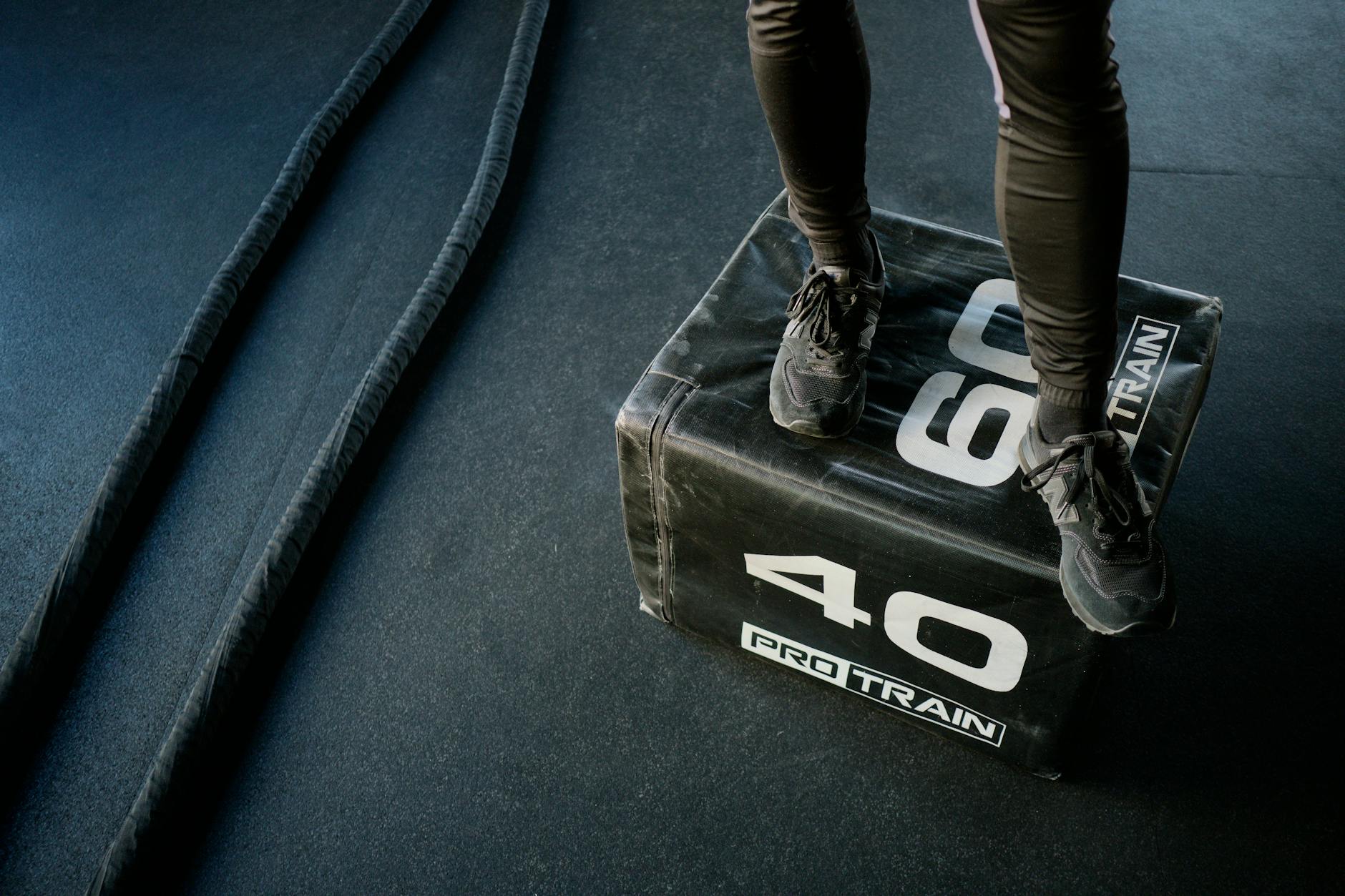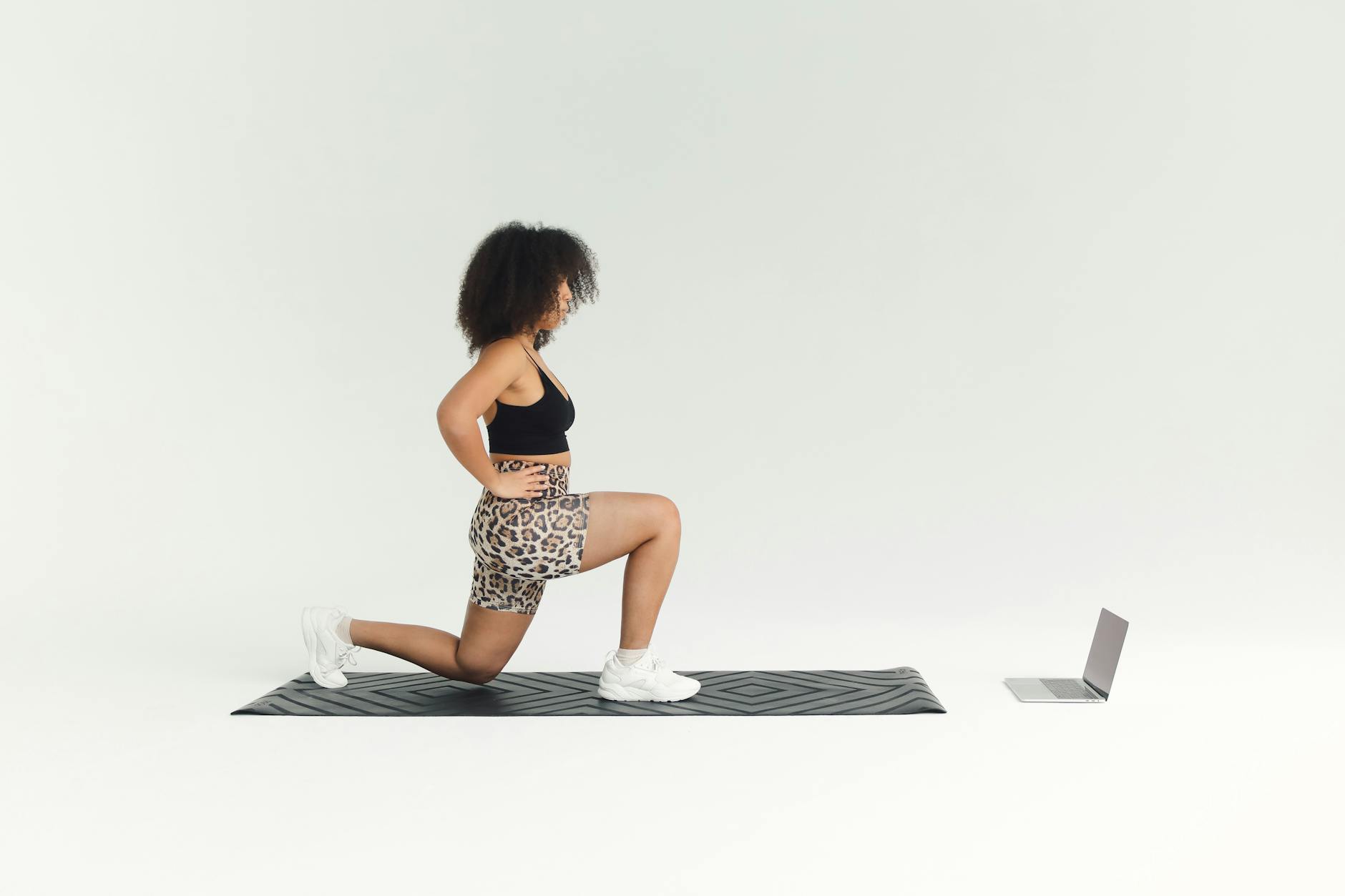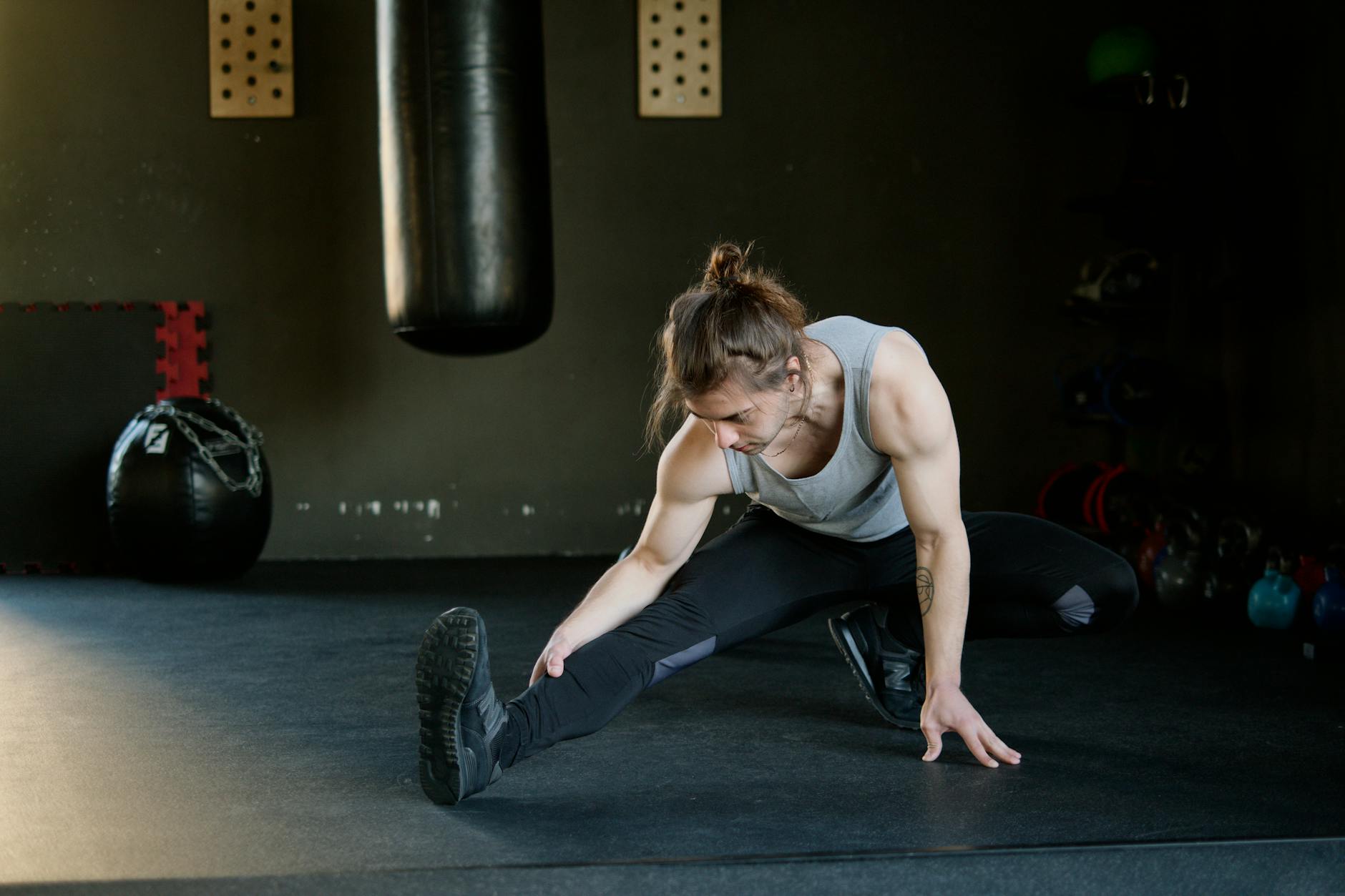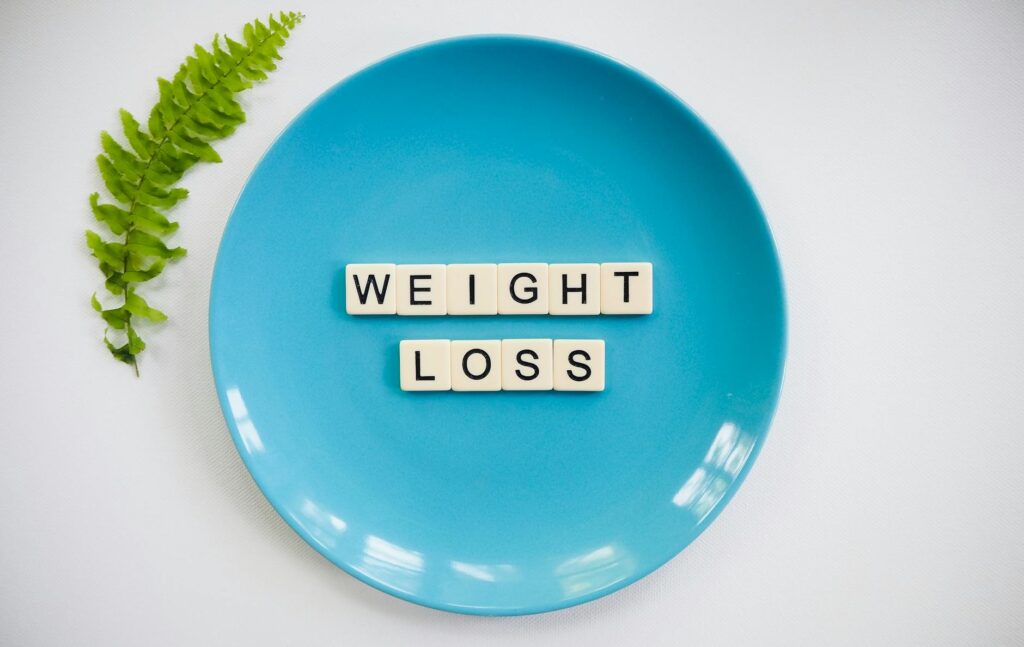
Are you tired of spending hours at the gym with little to show for it? Struggling to shed those stubborn pounds, especially around your midsection? It’s time to revolutionize your workout routine with High-Intensity Interval Training (HIIT)!
HIIT has taken the fitness world by storm, and for good reason. This powerhouse workout method not only torches calories in record time but also supercharges your metabolism, making it the ultimate fat-burning solution. Imagine achieving your weight loss goals with shorter, more efficient workouts that target belly fat like never before. Sounds too good to be true? Think again!
In this blog post, we’ll dive deep into the science behind HIIT and reveal why it’s the go-to choice for those seeking rapid, sustainable fat loss. From understanding how HIIT turbocharges your metabolism to designing the perfect HIIT workout for maximum calorie burn, we’ve got you covered. Get ready to unlock the secrets of efficient, science-backed workouts that will transform your body and revolutionize your fitness journey. Let’s explore how HIIT can be your ticket to a leaner, healthier you!

Understanding HIIT: The Science Behind Fat Burning
Definition and principles of HIIT
High-Intensity Interval Training (HIIT) is a workout strategy that alternates between short bursts of intense exercise and brief periods of rest or low-intensity activity. This method is designed to push your body to its limits, maximizing calorie burn and fat loss in a shorter time frame.
Key principles of HIIT include:
- Intensity: Pushing to 80-95% of your maximum heart rate during high-intensity intervals
- Duration: Short bursts of activity, typically lasting 20-90 seconds
- Recovery: Brief rest periods between intense intervals
- Repetition: Multiple cycles of high-intensity and recovery periods
The metabolic impact of high-intensity workouts
HIIT workouts have a profound effect on metabolism, leading to accelerated fat loss. Here’s how:
- Increased EPOC (Excess Post-exercise Oxygen Consumption): HIIT creates an “afterburn” effect, causing your body to continue burning calories for hours after the workout.
- Improved insulin sensitivity: This helps your body better utilize glucose, reducing fat storage.
- Enhanced mitochondrial function: More efficient energy production in cells leads to increased fat oxidation.
| Metabolic Impact | HIIT | Traditional Cardio |
|---|---|---|
| EPOC | High | Low to Moderate |
| Insulin Sensitivity | Significantly Improved | Moderately Improved |
| Mitochondrial Function | Greatly Enhanced | Moderately Enhanced |
How HIIT differs from traditional cardio
HIIT stands apart from traditional steady-state cardio in several ways:
- Time efficiency: HIIT sessions are typically shorter, often lasting 20-30 minutes compared to 45-60 minutes for traditional cardio.
- Intensity: HIIT pushes your body to higher intensity levels, whereas traditional cardio maintains a steady, moderate intensity.
- Variety: HIIT workouts can incorporate a wide range of exercises, keeping workouts engaging and challenging different muscle groups.
- Adaptability: HIIT can be tailored to various fitness levels and goals, making it accessible to beginners and advanced athletes alike.
Now that we’ve covered the fundamentals of HIIT and its fat-burning potential, let’s explore how it specifically affects your metabolism.

HIIT’s Effect on Metabolism
Now that we understand the science behind HIIT, let’s explore how it impacts your metabolism. HIIT’s powerful effects on metabolism are what make it such an effective tool for fat loss and overall fitness improvement.
Long-term metabolic adaptations
HIIT triggers significant long-term metabolic adaptations in your body. These changes help you burn fat more efficiently, even when you’re not exercising. Here’s a breakdown of the key adaptations:
- Increased mitochondrial density
- Enhanced fat oxidation capacity
- Improved insulin sensitivity
- Greater muscle glycogen storage
Hormonal changes that promote fat loss
HIIT stimulates the production of hormones that facilitate fat loss:
- Growth Hormone: Increases fat burning and muscle growth
- Catecholamines: Mobilize fat stores for energy use
- Adiponectin: Improves insulin sensitivity and fat metabolism
The afterburn effect: EPOC explained
One of HIIT’s most significant benefits is the Excess Post-exercise Oxygen Consumption (EPOC), also known as the afterburn effect. This phenomenon keeps your body burning calories long after your workout has ended.
| EPOC Factor | Effect on Metabolism |
|---|---|
| Duration | Up to 24-48 hours post-workout |
| Intensity | Higher intensity = Greater EPOC |
| Calorie Burn | Additional 6-15% of total workout calories |
Boosting your metabolic rate
HIIT effectively boosts your resting metabolic rate (RMR), which is the number of calories your body burns at rest. This increase in RMR contributes significantly to long-term fat loss and weight management.
- HIIT can increase RMR by up to 15%
- Effects can last for several days after a workout
- Regular HIIT practice leads to sustained metabolic improvements
With these metabolic benefits in mind, let’s explore how HIIT can specifically target stubborn belly fat in the next section.

Targeting Belly Fat with HIIT
Now that we understand how HIIT affects metabolism, let’s explore its effectiveness in targeting belly fat. While spot reduction is a common misconception, HIIT can be particularly effective for reducing abdominal fat through overall fat loss and strategic exercise combinations.
Combining HIIT with core-specific exercises
Incorporating core-specific exercises into your HIIT routine can enhance the overall effectiveness of your workout for belly fat reduction. Here’s a sample HIIT circuit that targets the core:
- Mountain climbers (30 seconds)
- Russian twists (30 seconds)
- Burpees (30 seconds)
- Plank jacks (30 seconds)
- Rest (30 seconds)
Repeat this circuit 3-4 times for a comprehensive HIIT workout that engages your core muscles while promoting overall fat loss.
Spot reduction myth vs. overall fat loss reality
It’s important to address the common misconception of spot reduction. Here’s a comparison of spot reduction vs. overall fat loss:
| Spot Reduction | Overall Fat Loss |
|---|---|
| Targets specific areas | Reduces fat throughout the body |
| Not scientifically proven | Backed by research |
| Ineffective for long-term results | Leads to sustainable fat loss |
| Often promoted in marketing | Recommended by fitness experts |
HIIT promotes overall fat loss, which includes reduction in belly fat as part of the total body composition change.
Why HIIT is effective for abdominal fat reduction
HIIT is particularly effective for reducing abdominal fat due to several factors:
- Increased post-exercise oxygen consumption (EPOC)
- Hormonal response that promotes fat burning
- Engagement of multiple muscle groups, including the core
- High-intensity nature that targets visceral fat
By incorporating HIIT into your fitness routine, you can effectively target belly fat through a combination of intense full-body workouts and strategic core exercises. Next, we’ll delve into designing an effective HIIT workout to maximize your fat loss results.

Designing an Effective HIIT Workout
Now that we understand how HIIT impacts metabolism and targets belly fat, let’s explore how to design an effective HIIT workout. A well-structured HIIT routine can maximize fat loss and efficiency, making it an ideal choice for those seeking quick results.
A. Sample HIIT workouts for different fitness levels
Here are three HIIT workouts tailored for various fitness levels:
| Fitness Level | Workout Structure | Exercises |
|---|---|---|
| Beginner | 20 seconds work, 40 seconds rest, 4 rounds | Jumping jacks, Bodyweight squats, Mountain climbers, Push-ups |
| Intermediate | 30 seconds work, 30 seconds rest, 5 rounds | Burpees, Alternating lunges, High knees, Plank jacks |
| Advanced | 40 seconds work, 20 seconds rest, 6 rounds | Tuck jumps, Kettlebell swings, Squat jumps, Plyometric push-ups |
B. Progressive overload in HIIT programming
To continue seeing results, incorporate progressive overload by:
- Increasing workout duration
- Reducing rest periods
- Adding more challenging exercises
- Increasing the number of rounds
C. Choosing the right exercises for maximum impact
Select exercises that:
- Engage multiple muscle groups
- Elevate heart rate quickly
- Can be performed with proper form at high intensity
D. Optimal work-to-rest ratios
Work-to-rest ratios vary based on fitness level and goals:
- Beginners: 1:2 or 1:1 (e.g., 20 seconds work, 40 seconds rest)
- Intermediate: 1:1 or 2:1 (e.g., 30 seconds work, 30 seconds rest)
- Advanced: 2:1 or 3:1 (e.g., 40 seconds work, 20 seconds rest)
Adjust these ratios as you progress to maintain the challenging nature of HIIT. With a well-designed HIIT workout, you’re now ready to maximize calorie burn during your sessions.

Maximizing Calorie Burn During HIIT
Now that we’ve explored the design of an effective HIIT workout, let’s focus on how to maximize calorie burn during your sessions. By optimizing your HIIT routine, you can achieve even greater fat loss results, especially around the belly area.
The role of proper form in calorie expenditure
Maintaining proper form during HIIT exercises is crucial for maximizing calorie burn and ensuring safety. Here’s why:
- Engages the right muscles
- Increases exercise efficiency
- Reduces injury risk
- Allows for higher intensity
To ensure proper form, consider the following tips:
- Start with lighter weights or bodyweight exercises
- Focus on controlled movements
- Engage your core throughout the workout
- Seek guidance from a fitness professional if unsure
Incorporating full-body movements
Full-body exercises are excellent for maximizing calorie burn during HIIT workouts. They engage multiple muscle groups simultaneously, leading to:
- Higher energy expenditure
- Increased metabolic demand
- Greater overall fat loss
Here’s a comparison of full-body movements vs. isolated exercises for HIIT:
| Full-Body Movements | Isolated Exercises |
|---|---|
| Burpees | Bicep curls |
| Mountain climbers | Crunches |
| Thrusters | Leg extensions |
| Jump squats | Tricep dips |
Intensity monitoring techniques
To ensure you’re pushing yourself to the right level of intensity during HIIT, use these monitoring techniques:
- Heart rate monitoring: Aim for 80-95% of your maximum heart rate during high-intensity intervals
- Rate of Perceived Exertion (RPE): Use a scale of 1-10, targeting 8-9 during intense bursts
- Talk test: You should be able to say only a few words at a time during high-intensity intervals
- Work-to-rest ratio: Maintain a challenging ratio, such as 20 seconds of work to 10 seconds of rest
By implementing these strategies, you’ll maximize calorie burn during your HIIT workouts, leading to more efficient fat loss and improved overall fitness. Next, we’ll explore how HIIT can be an excellent time-efficient solution for those with busy schedules.

HIIT for Time-Efficient Fat Loss
Now that we understand how HIIT affects metabolism and targets belly fat, let’s explore how it can be an incredibly time-efficient method for fat loss.
Frequency recommendations for optimal results
For optimal fat loss results, experts recommend incorporating HIIT workouts 2-3 times per week. This frequency allows for adequate recovery while still providing significant benefits. Here’s a breakdown of recommended HIIT frequency based on fitness levels:
| Fitness Level | HIIT Sessions per Week | Recovery Days |
|---|---|---|
| Beginners | 1-2 | 2-3 |
| Intermediate | 2-3 | 1-2 |
| Advanced | 3-4 | 1 |
Fitting HIIT into a busy schedule
One of the greatest advantages of HIIT is its flexibility and time efficiency. Here are some ways to incorporate HIIT into a hectic schedule:
- Wake up 20 minutes earlier for a morning HIIT session
- Use your lunch break for a quick workout
- Replace your evening TV time with a HIIT routine
- Integrate HIIT into your commute by cycling or running intervals
Comparing time investment: HIIT vs. steady-state cardio
HIIT offers significant time savings compared to traditional steady-state cardio. Let’s compare the two:
- HIIT: 15-20 minutes, 2-3 times per week
- Steady-state cardio: 45-60 minutes, 4-5 times per week
A study published in the Journal of Obesity found that just 20 minutes of HIIT, performed three times per week for 12 weeks, resulted in significant reductions in total body fat, especially abdominal and trunk fat. This time-efficient approach makes HIIT an excellent choice for those looking to maximize fat loss with minimal time investment.
Next, we’ll explore how to complement your HIIT workouts with proper nutrition to further enhance your fat loss results.

Complementing HIIT with Proper Nutrition
Now that we’ve explored the benefits of HIIT for fat loss, let’s focus on how proper nutrition can enhance your results and support your high-intensity workouts.
Balancing macronutrients to support HIIT performance
To maximize your HIIT performance and fat loss results, it’s crucial to maintain a balanced diet with the right mix of macronutrients. Here’s a breakdown of recommended macronutrient ratios for HIIT enthusiasts:
| Macronutrient | Percentage of Daily Calories | Benefits for HIIT |
|---|---|---|
| Carbohydrates | 40-50% | Provide energy for intense workouts |
| Protein | 25-35% | Support muscle recovery and growth |
| Fats | 20-30% | Aid in hormone production and nutrient absorption |
Post-HIIT nutrition for recovery and fat loss
After a challenging HIIT session, your body needs proper nutrition to recover and continue burning fat. Consider these post-workout nutrition tips:
- Consume a protein-rich snack within 30 minutes of your workout
- Include complex carbohydrates to replenish glycogen stores
- Stay hydrated with water or an electrolyte-rich beverage
- Avoid excessive calorie intake that could negate your fat loss efforts
Fueling for high-intensity workouts
To perform at your best during HIIT sessions and maintain a high metabolism, it’s essential to fuel your body properly. Here are some pre-workout nutrition strategies:
- Eat a light meal containing carbohydrates and protein 2-3 hours before your HIIT session
- Consider a small snack rich in easily digestible carbs 30-60 minutes before your workout
- Stay hydrated by drinking water throughout the day and during your HIIT routine
By complementing your HIIT workouts with proper nutrition, you’ll not only support your body’s performance and recovery but also enhance your fat loss results, particularly around the belly area. Next, we’ll discuss important safety considerations and precautions to keep in mind when incorporating HIIT into your fitness routine.

Safety Considerations and Precautions
While HIIT is an effective fat-burning workout, it’s crucial to prioritize safety to prevent injuries and ensure long-term success. Let’s explore some essential safety considerations and precautions for HIIT workouts.
When to scale back or modify HIIT workouts
It’s important to listen to your body and adjust your HIIT routine when necessary. Here are some situations when you should consider scaling back or modifying your workouts:
- Feeling excessively fatigued
- Experiencing persistent muscle soreness
- Recovering from an injury
- Dealing with high stress levels
Avoiding overtraining and burnout
To prevent overtraining and burnout, follow these guidelines:
- Limit HIIT sessions to 2-3 times per week
- Allow for adequate rest between workouts (24-48 hours)
- Incorporate variety in your exercise routine
- Monitor your progress and adjust intensity as needed
Proper warm-up and cool-down techniques
A proper warm-up and cool-down are essential for safe HIIT workouts. Here’s a comparison of effective techniques:
| Warm-up Techniques | Cool-down Techniques |
|---|---|
| Dynamic stretching | Static stretching |
| Light cardio | Gentle jogging or walking |
| Mobility exercises | Foam rolling |
| Sport-specific drills | Deep breathing exercises |
Who should (and shouldn’t) do HIIT
HIIT can be beneficial for many individuals, but it’s not suitable for everyone. Here’s a quick guide:
Suitable for:
- Healthy adults looking for efficient fat loss
- Athletes seeking to improve performance
- Individuals with limited time for exercise
Not recommended for:
- People with certain heart conditions
- Pregnant women (without medical clearance)
- Individuals with joint issues or injuries
- Those new to exercise (start with lower-intensity workouts first)
Always consult with a healthcare professional before starting any new exercise program, especially if you have pre-existing health conditions or concerns.

High-Intensity Interval Training (HIIT) stands out as a powerful tool for those seeking efficient and effective fat loss, particularly around the stubborn belly area. By incorporating short bursts of intense exercise with brief recovery periods, HIIT supercharges your metabolism, maximizes calorie burn, and targets fat stores throughout the body. Its time-efficient nature makes it an ideal choice for busy individuals looking to achieve significant results without spending hours in the gym.
To make the most of HIIT, remember to design varied workouts, maintain proper form, and complement your exercise routine with a balanced diet. As with any intense workout regimen, listen to your body and start gradually to avoid injury. By consistently implementing HIIT into your fitness routine, you’ll be well on your way to achieving your fat loss goals and enjoying a leaner, healthier physique.

